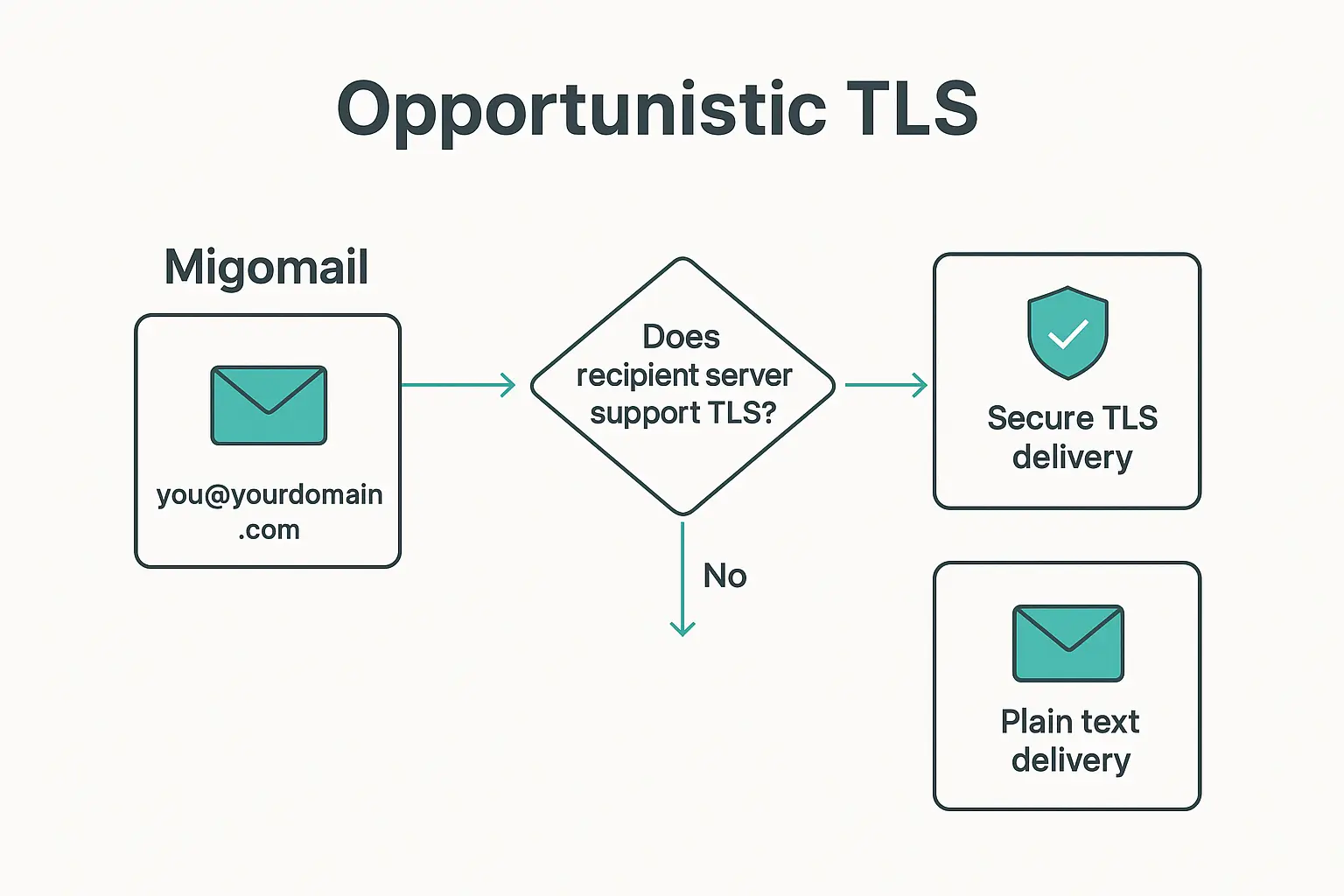Opportunistic TLS
Table of Contents
What is Opportunistic TLS?
Opportunistic TLS (Transport Layer Security) is a security protocol used in email transmission that automatically attempts to encrypt communication between mail servers whenever possible. Unlike enforced TLS, Opportunistic TLS does not require encryption; instead, it prefers it. If the receiving server supports TLS, the email will be transmitted securely. If not, the email is delivered in plain text to ensure compatibility and deliverability.

Opportunistic TLS
In simple words, Opportunistic TLS means:
-
Try encryption first.
-
If encryption is not supported, fall back to unencrypted delivery.
Why is Opportunistic TLS Important?
-
✅ Improves security: Emails are encrypted whenever possible, making it harder for attackers to intercept.
-
✅ Ensures deliverability: Emails are still delivered even if the recipient’s server does not support TLS.
-
✅ Industry standard: Most major email providers (like Gmail, Outlook, Yahoo) support TLS, so most of your emails will be encrypted.
Example of Opportunistic TLS in Action
Scenario 1: Recipient server supports TLS
-
You send an email from you@yourdomain.com (using Migomail).
-
The recipient’s server (e.g., Gmail) supports TLS.
-
Result: The email is transmitted encrypted using TLS, ensuring security.
Scenario 2: Recipient server does not support TLS
-
You send an email from you@yourdomain.com (using Migomail).
-
The recipient’s server is old and does not support TLS.
-
Result: Migomail falls back to unencrypted delivery, but the email is still delivered successfully instead of failing.
👉 This is why it’s called Opportunistic TLS — it takes the opportunity to encrypt when possible, but does not block emails if encryption is not available.
Opportunistic TLS vs. Forced TLS
| Feature | Opportunistic TLS | Forced TLS |
|---|---|---|
| Encryption Requirement | Optional | Mandatory |
| Compatibility | High (works with all servers) | Limited (fails if TLS not supported) |
| Security Level | Good (when available) | Very High |
| Deliverability Risk | None | Possible delivery failures |
How Opportunistic TLS Works in Migomail
At Migomail, we enable Opportunistic TLS by default:
-
When sending an email, Migomail checks if the recipient’s server supports TLS.
-
If yes → email is encrypted and delivered securely.
-
If not → email is delivered unencrypted, but still reaches the inbox.
Key Benefits for Migomail Users
-
Automatic Encryption without extra setup.
-
Better Security & Trust for business emails.
-
High Deliverability even with non-TLS servers.
FAQ
Q1. Does Opportunistic TLS guarantee encryption?
No. Encryption only happens if the recipient’s server supports TLS. If not, the email is sent unencrypted.
Q2. Is Opportunistic TLS enough for sensitive data?
For general communication, yes. But if you need strict encryption for compliance (like financial or healthcare data), you may require Forced TLS or end-to-end encryption.
Q3. Do I need to enable this in Migomail?
No. Opportunistic TLS is enabled by default in Migomail for all users.
Final Thoughts
Opportunistic TLS is a smart way to ensure your emails are delivered securely whenever possible, without risking delivery failures. At Migomail, we provide this by default, giving you the best balance between security and reliability.


